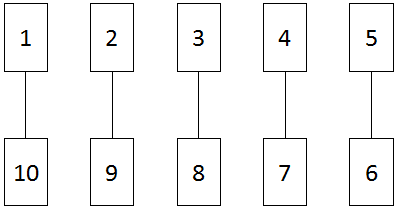Fifty-five Feathers
This is an activity based on the picture book Fifty-five Feathers.
Students will be able to record and solve problems involving the sum of sequential numbers.
The sum of any sequence of numbers can be found as the product of the number of equal-summed pairs. For example 10 + 11 + 12 + 13 + 14 + 15 +16 = 3 x 27 = 81 because 11 & 16, 12 & 15, 13 & 14 are all pairs that sum to 27.
- Fifty-five Feathers by Ben Brown
- Numbers 1-10 on A4 pieces of paper
Feather Patterns
This activity is based on the picture book Fifty-five feathers.
Author: Ben Brown
Illustrator: Helen Taylor
Publisher: Reed (2004)
ISBN: 978-1-869-48-683-9
Summary:
Pukeko goes searching for donations from the other native birds to make a cloak for her friend Gecko. The pattern of feather donations follows a simple sequence that provides the opportunity to explore additive and simple multiplicative number patterns.
Lesson Sequence:
- Prior to reading, support students to access their knowledge of native and exotic birds by brainstorming the birds they have seen and the ones they know the names of. Ask students to recall the colours and textures of the birds’ feathers. You may want to have some different feathers for students to explore and describe.
- Appoint a recorder to record the numbers from the story on the whiteboard or modeling book as you read.
- Share the story with your students. Pause after each “donation” to ensure the recorder has recorded the next step in the sequence. By the end of the story the sequence should be: 1+2+3+4+5+6+7+8+9+10
- After reading the story ask:
How can we be sure there are 55 feathers in the cloak?
Ask students to work in pairs and come up with a strategy for adding the ten numbers together and checking Pukeko’s maths. Have students share their strategies with the group.
Expected strategies:
-adding-on in sequence: 1+2 is 3 and +3 is 6 …
-making tens, then adding the number of tens and any extra: 4+6, 3+7, 2+8, 1+9, 10, that is 5 tens which is 50 and then 5 more. - Explore this calculation pattern with your students.
Ask 10 people to come to front of the room. Give each person a piece of paper with one of the numbers 1-10 (the feather donations) recorded on them.
Say you are going to look at adding the numbers 1-10 by making some pairs. Pair the largest and the smallest number 1 & 10 and ask some one to record the sum.
Then repeat by pairing the largest and the smallest each time and recording the sum until all are paired. (You will have 5 pairs of 11)
Ask what 5 groups of 11 is and what do people notice about your strategy.
Ask if they think it would work with other sequences of numbers.
Ask them to go and try your strategy in pairs with any 6 numbers in sequence, pairing the biggest and the smallest. - Provide the following challenges:
a. What if Pukeko had visited 15 birds and the donation pattern had continued, how many feathers would he have collected?
b. What if Pukeko had visited 100 birds for donations and kept the same pattern going, how many feathers would he have collected?
c. How many birds would he have to visit with the same pattern if he wanted to make 3 gecko cloaks?
d. How do you use this pairing strategy when there are an odd number of addends?
e. Create feather cloak problems that can be solved working with our equal pairs strategy.
